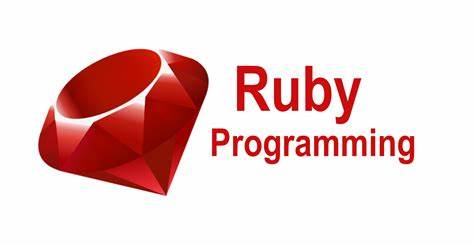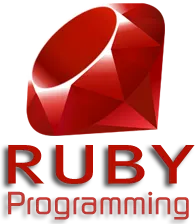Table of Contents
Introduction:
Ruby programing language is a dynamic, object-oriented programming language that is widely used for web development. Known for its simplicity and elegance, Ruby is easy for beginners to learn and provides a high level of expressiveness for more experienced developers. In this comprehensive guide, we’ll explore the basics of Ruby programming, including its history, syntax, and key features. We’ll also take a look at the Rails framework, which is one of the most popular tools for building web applications with it. Whether you’re just starting out with programming or you’re a seasoned pro looking to add to your skill set, this guide has something for everyone.

Properties of Ruby programing language:
- Object-Oriented: Ruby is an object-oriented language, meaning that everything in Ruby is an object and can be manipulated using object-oriented techniques such as inheritance, encapsulation, and polymorphism.
- Dynamic Typing: Ruby uses dynamic typing, which means that variables do not have a fixed type and can change at runtime. This makes the language more flexible, but can also result in runtime errors if not used carefully.
- Garbage Collection: Ruby has built-in garbage collection, which automatically frees memory that is no longer being used by the program. This helps to reduce memory leaks and improve the overall performance of the language.
- Syntax: Ruby has a clean and simple syntax that emphasizes readability and ease of use. This makes the language a good choice for beginner programmers, as well as for more experienced developers who value code that is easy to understand and maintain.
- Interpreted: Ruby is an interpreted language, meaning that code is executed directly by the interpreter, rather than being compiled into machine code. This makes the development process faster and more flexible, but can result in slower performance compared to compiled languages.
- Standard Library: Ruby has a rich standard library that provides a wide range of functionality, including file I/O, networking, and string manipulation. This makes it easier to write and maintain code, and reduces the need to use external libraries.
Historyof Ruby:
Ruby was first released in 1995 by Yukihiro “Matz” Matsumoto, and it quickly gained popularity among developers for its elegant and concise syntax. Unlike other programming languages, Ruby is designed to prioritize the needs of the programmer, making it easier and more enjoyable to write code. This, in turn, leads to higher productivity and more efficient code.
One of the key features of Ruby is its support for object-oriented programming (OOP). OOP is a programming paradigm that is centered around objects, which are instances of classes. In Ruby, classes are used to define objects, and objects can contain methods (functions) and instance variables (data). This makes it easy to model real-world objects in your code, leading to more organized and reusable code.
Another key feature of Ruby is its vast library of gems, which are pre-written code libraries that can be easily added to your projects. These gems provide a wide range of functionality, from database access to authentication, making it easier and faster to build web applications with Ruby.
One of the most popular tools for building web applications with Ruby is the Rails framework. Rails is a full-stack framework that provides everything you need to build a complete web application, from the front-end user interface to the back-end database. Rails is designed to be easy to use, and it follows a convention-over-configuration approach, meaning that it provides a set of default configurations that make it easy to get started.
Whether you’re just starting out with programming or you’re a seasoned pro, Ruby is a powerful and versatile language that is well worth exploring. With its elegant syntax, support for object-oriented programming, and vast library of gems, Ruby makes it easy and enjoyable to build web applications. So why not start learning Ruby today, and discover the power of this dynamic and versatile programming language for yourself!

Advantage of Ruby programing language:
- Readability: Ruby’s syntax is designed to be readable, making it easy to write and understand code.
- Dynamic typing: Ruby is a dynamically typed language, meaning you don’t need to declare variables before you use them. This makes writing code faster and less prone to errors.
- Flexibility: Ruby is a highly flexible language that can be used for a wide range of tasks, including web development, scripting, and scientific computing.
- Large community: Ruby has a large and active community of developers who have created a wide range of libraries, gems, and tools that make it easier to write and maintain code.
- Interoperability: Ruby can interact with other programming languages, making it a good choice for building applications that require integration with other technologies.
- Object-Oriented: Ruby is an object-oriented language, making it easy to organize code into reusable components.
Disadvantages of using Ruby programming language:
- Performance: Ruby is slower than other programming languages such as C or Java, due to its dynamic typing and use of interpreted code.
- Memory usage: Ruby uses more memory than other programming languages, which can make it less suitable for memory-intensive applications.
- Learning curve: Ruby’s syntax is designed to be easy to read, but it may take some time to learn all of its features and quirks.
- Library dependency: Ruby relies heavily on libraries and gems, which can make it difficult to understand how an application works and increase the risk of compatibility issues.
- Lack of static typing: Some developers may prefer the safety and predictability of statically typed languages, which Ruby does not provide.
- Threading limitations: Ruby’s Global Interpreter Lock (GIL) makes it difficult to take advantage of multiple cores, which can limit its performance in certain multithreaded applications.
In conclusion:
Ruby is a dynamic and flexible programming language that has a lot of advantages for developers. Its readable syntax, large community, and interoperability make it a popular choice for a wide range of applications. However, its performance limitations, memory usage, and lack of static typing can also be disadvantages in certain scenarios. Whether Ruby is the right choice for a particular project depends on the specific needs and requirements of that project.

